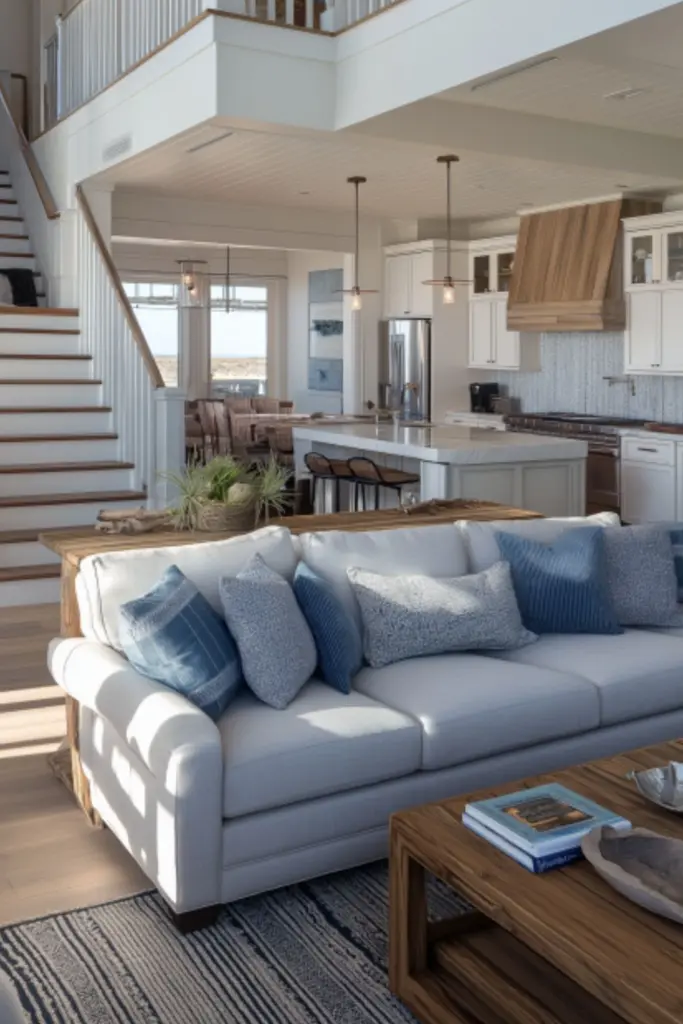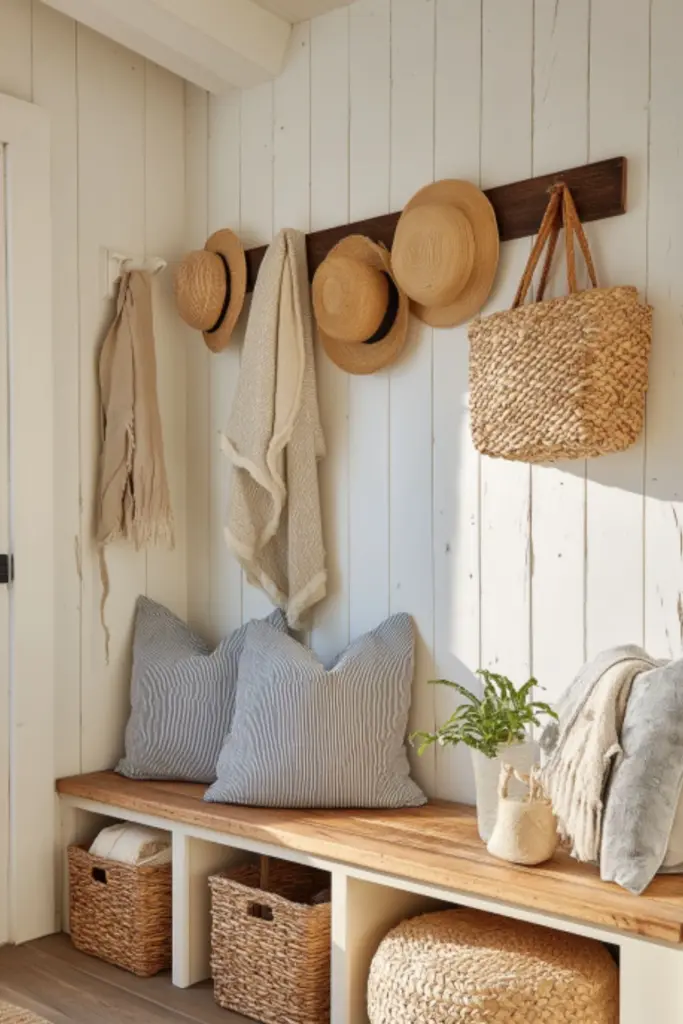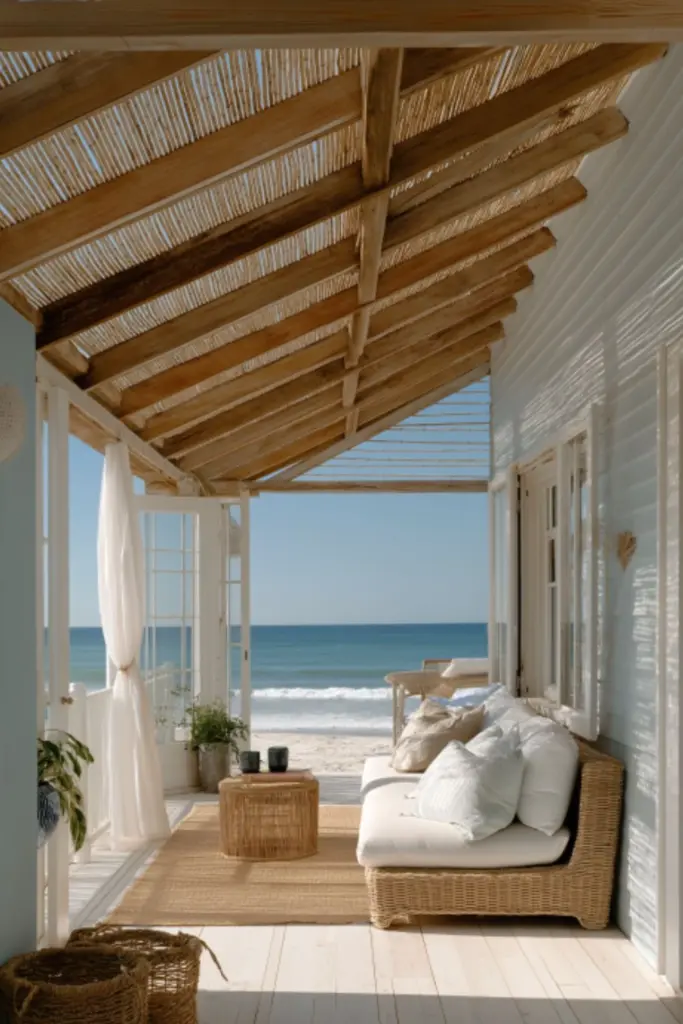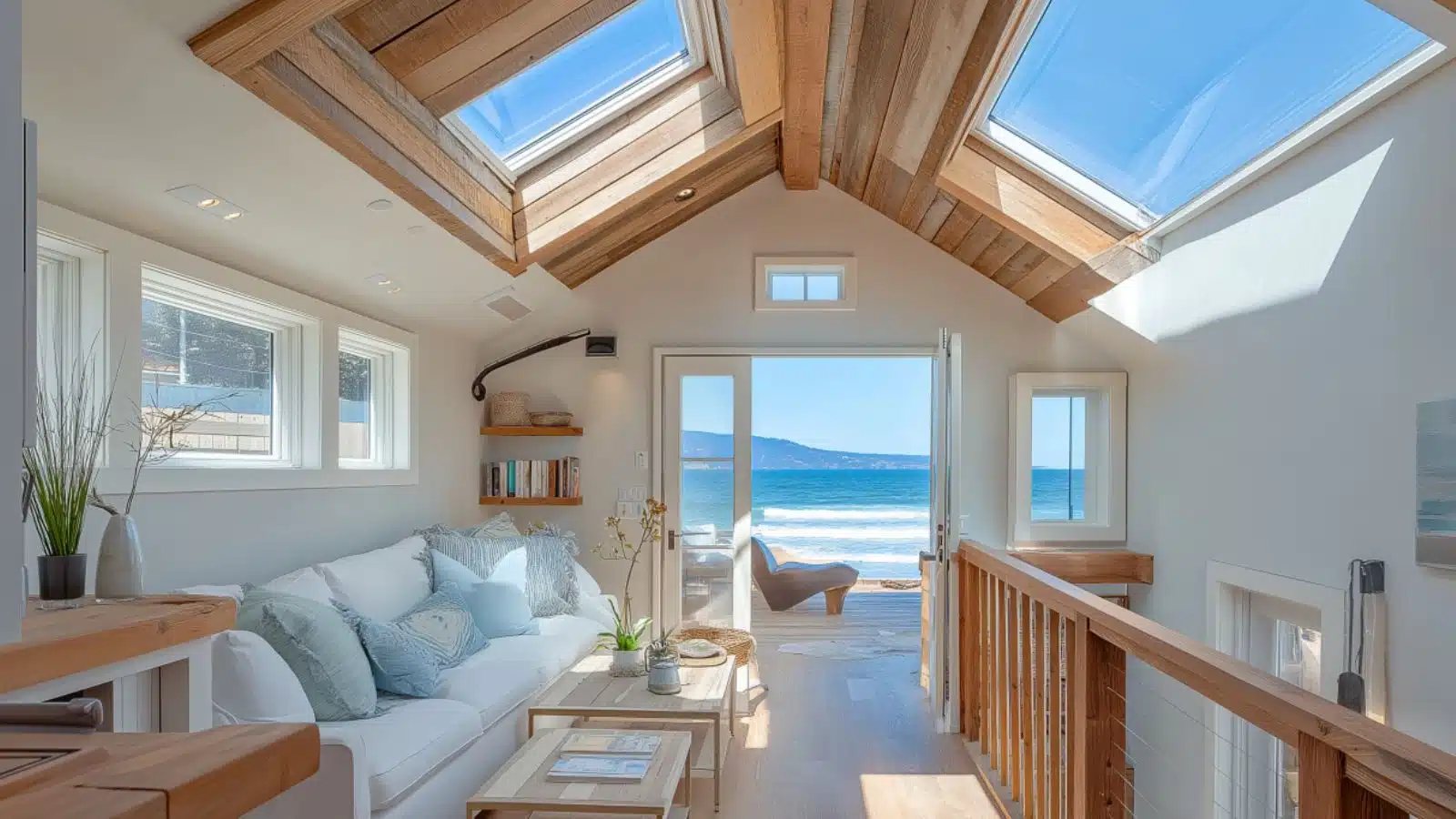Functional Beach House Layout with Loft Bedrooms: Smart Coastal Design Ideas
Table of Contents
Imagine waking up to ocean breezes and sunlight streaming through high windows, all while feeling the cozy comfort of a well-organized home. Loft bedrooms in beach houses offer that dreamy combination—opening vertical space, enhancing views, and maximizing square footage in smaller coastal properties. According to a recent Coastal Living survey, over 45% of homeowners consider lofts a key feature when choosing a beach property, citing both aesthetic appeal and practicality.
A functional beach house layout with loft bedrooms goes beyond letting in the breeze. It balances open living, thoughtful storage, seamless flow, and coastal charm. Whether your property is a compact seaside cottage or a converted beachfront barn, the right layout helps you maximize space while sustaining an easygoing coastal vibe.
In this guide, we’ll walk through essential coastal design principles for beach house layouts with loft bedrooms. Featuring smart floor planning, loft conversion best practices, storage solutions for sandy gear, indoor-outdoor transitions, lighting strategies, and furniture placement, you’ll leave with practical ideas to elevate your coastal retreat.
Optimizing Vertical Space with Loft Bedrooms
Lofts are the secret weapon in small beach homes—they reclaim underutilized vertical volume and free up floor space for gatherings, cooking, or lounging. A well-placed loft adds privacy and utility while preserving an open, airy ambiance.
Start by identifying the optimal location for the loft—typically above a kitchen, dining area, or living room. Sloped or cathedral ceilings are ideal; otherwise, vaulting a portion of the roof can create headroom while preserving the coastal cottage feel.
Safety and functionality should guide your design. Use oversized, sturdy railings for beachy appeal, and integrate storage solutions like built-in shelving or drawers beneath steps. Position the bed so you wake up to sea views, and use skylights or gable windows to enhance natural light.
| Loft Element | Benefit | Implementation Tip |
|---|---|---|
| Sloped ceiling | Creates cozy sleeping nook | Add recessed lighting or string fixtures |
| Built-in storage | Uses otherwise dead space | Drawers under steps or shelves along wall |
| Guardrails + railing | Ensures safety with style | Choose rope or wood balusters for style |
| Skylight / window | Maximizes daylight and ocean views | Plan for shading or curtains |
Smart Layout Planning for Coastal Living

A functional beach house layout balances communal living, private retreats, and practical zones for surfboards or sandy companions. An open-plan ground floor—kitchen, dining, lounge—creates fluidity and maximizes light and view potential.
Define areas using rugs, furniture placement, or partial partitions rather than walls to preserve openness. A compact kitchen island can serve multiple purposes: prep space, dining counter, and foothold for loft stairs. Incorporating storage cubbies or lockers for beach gear near the entry helps keep sand at bay.
Consider a layout that runs parallel to the shoreline—living area facing the coast, service areas tucked behind. This design keeps the best views unobstructed while maintaining functionality.
| Zone | Purpose | Coastal Design Tip |
|---|---|---|
| Entry + storage | Transition from outside | Use built-in lockers or bench with baskets |
| Kitchen + dining | Central gathering point | Open shelving and light wood create ambiance |
| Living/lounge area | Relaxing spot near water view | Group furniture around rug, avoid blocking views |
| Loft access area | Path to private sleeping zone | Use ladders or stairs with storage below |
Clever Storage Solutions for Beach Gear

Beach living means sand, boards, towels, and salty breezes—all of which need dedicated storage. Incorporating built-in benches, lockers, cubbies, and loft storage keeps belongings organized without disrupting style.
Along the entry, a bench with cubbies underneath provides a place to remove sandy footwear. Adjacent hooks or pegs handle wet towels and wetsuits, while waterproof bins inside the loft can store extra bedding or seasonal gear.
Getting creative in the loft, install drawers beneath the bed or build recessed shelves into knee wall space. Slim storage units behind guardrails or between rafters can hold extra linens or personal items.
| Storage Type | Ideal Use | Quick Implementation Tip |
|---|---|---|
| Entry cubby bench | Shoes, flip-flops, beach gear | Add removable baskets for easy cleaning |
| Wall pegs/hooks | Wetsuits, towels, hats | Use brass or matte black hardware |
| Beneath-loft drawers | Bedding, clothing, infrequently used items | Design flush faces for clean look |
| Loft storage cubbies | Seasonal decor or personal items | Use decorative bins matching palette |
Enhancing Indoor–Outdoor Flow with Coastal Touches

A key principle of beach living is seamless indoor-outdoor transition, enhancing airflow, light, and lifestyle flow. Large sliding or bifold doors facing the shoreline help dissolve the barrier between interior comfort and ocean air.
Use consistent flooring—such as whitewashed wood or light-toned composite deck boards—across the living space and porch to create visual continuity. Include overhangs like pergolas or awnings that allow for outdoor living even in breezy or rainy weather.
The furniture should be hardy and coastal—think teak loungers, woven chairs, and waterproof cushions in neutral tones. Incorporate beachy textures in rugs, throws, and pillows, and layer in vibrant accents to reflect the ocean’s palette.
| Design Component | Benefit | Coastal Style Tip |
|---|---|---|
| Sliding glass doors | Bring in light and sea breeze | Use timber frames for natural warmth |
| Continuous flooring | Creates visual extension | Choose materials or tones that resist moisture |
| Outdoor furniture area | Extends living zones | Mix hard materials with soft cushions |
| Pergola or shade | Enables all-weather outdoor use | Add retractable canvas or bamboo slats |
Selecting the Right Furniture for Loft Spaces
Loft bedrooms require strategic furniture planning to avoid clutter and maximize comfort. Because headroom is often limited, low-profile pieces—short beds, platform frames, or mattresses directly on the floor—work best.
Multifunctional furniture is a must: ottomans with storage, collapsible desks, and stackable side tables are ideal. Opt for furniture that complements the coastal palette—soft blues, sandy neutrals, whitewashed wood.
Prioritize space-saving solutions: foldable nightstands or wall-mounted lap trays save floor space. Lighting should be low-hanging pendants or mounted reading lights so they don’t intrude into the loft area.
| Furniture Item | Loft-Friendly Feature | Coastal Style Tip |
|---|---|---|
| Low platform bed | Keeps headroom clear | Choose light wood or whitewashed finish |
| Multifunction ottoman | Extra seating + concealed storage | Cover with textured, coastal fabric |
| Fold-down lap tray | Space-saving bedside surface | Use teak or bamboo to withstand moisture |
| Mounted reading light | Wall-mounted avoids clutter | Choose brass or rattan finish |
Lighting and Ventilation to Complement Beach Vibes
A beach house loft should feel bright, breezy, and fresh. Skylights or clerestory windows in the loft ceiling invite natural light and silent ocean breezes. Use light-filtering or blackout shades to control heat and privacy.
Inside, install ceiling fans with palm-leaf blades or rattan detailing to keep air circulating. Pendant lighting with woven shades adds character without overwhelming the compact space.
Floor lamps or wall sconces with salt-resistant finishes in brass or matte black are functional and stylish accents. For evenings on the deck, add string lights, lanterns, or solar-powered path lights to extend ambiance outdoors.
| Light Source | Purpose | Beach-Friendly Example |
|---|---|---|
| Loft skylight/window | Natural light, airflow | Install UV-resistant glazing |
| Ceiling fan | Cooling without obstruction | Choose rattan bladed design |
| Woven pendant shade | Accent lighting and texture | Use jute or bamboo |
| Outdoor lighting | Extends evening enjoyment | Weatherproof lanterns or string lights |
Maintaining Coastal Durability and Style
A beach house must withstand sand, salt, and sun, so materials and finishes should be both beautiful and hardy. Use marine-grade paint, weather-resistant fabrics, and corrosion–resistant fixtures.
For wood surfaces, select teak, cedar, or treated pine—these resist rot and fading. Cushion fabrics should be Sunbrella or quick-dry foam with UV protection. Choose hardware in powder-coated or stainless steel finishes.
Regular cleaning routines—rinsing sand off floors, washing cushion covers, inspecting seals—will protect your home while maintaining its relaxed coastal style. Embrace the patina that comes with beachside living; it’s part of the charm.
| Material Category | Durable Options | Maintenance Tip |
|---|---|---|
| Wood surfaces | Teak, treated pine, cedar | Apply UV-protective oil annually |
| Fabrics | Sunbrella, acrylic blends | Wash covers, store when not in use |
| Hardware | Stainless steel, powder-coated metals | Rinse salt periodically |
| Paint/Sealants | Marine-grade, UV–resistant finishes | Re-seal around doors yearly |
Conclusion
Designing a functional beach house layout with loft bedrooms marries coastal charm with smart space planning. By maximizing vertical space, integrating clever storage, and enhancing indoor–outdoor flow, you can create an inviting coastal retreat no matter the size of your plot.
Lofts lend privacy and character, while durable furnishings and smart materials ensure longevity in seaside conditions. From breezy airflow to relaxed lighting and natural textures, each element works together to capture the essence of beach living: laid‑back, bright, and effortlessly stylish.
With thoughtful design and simple upgrades, any little beach house can transform into an elegant, functional coastal haven—ready for tranquil mornings and sunset gatherings alike.

